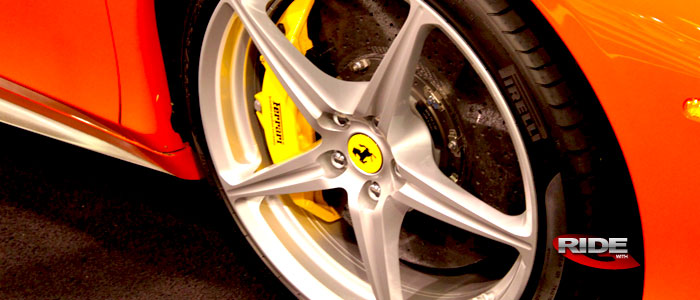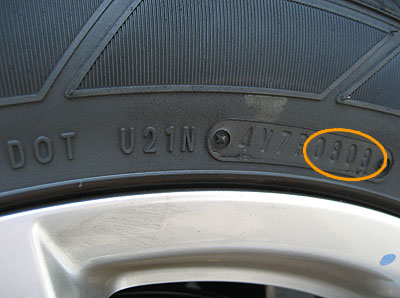At the end of every lease, the inspection company that comes out to check your vehicle will no doubt check your tires tread depth. Here is a link that provides some information on how to measure the tire tread of your tires (courtesy of TireRack). If you don’t feel like clicking the link, here’s a quick except on how to do it…
U.S. coins can be substituted for a tire tread depth gauge as tires wear to the critical final few 32nds of an inch of their remaining tread depth.
Place a penny into several tread grooves across the tire. If part of Lincoln’s head is always covered by the tread, you have more than 2/32″ of tread depth remaining.
Place a quarter into several tread grooves across the tire. If part of Washington’s head is always covered by the tread, you have more than 4/32″ of tread depth remaining.
Place a penny into several tread grooves across the tire. If the top of the Lincoln Memorial is always covered by the tread, you have more than 6/32″ of tread depth remaining.
Once you have determined the approximate remaining tread depth in the first location, you can complete your measurement of each tire by placing the coin into additional locations at lease 15 inches apart around the tire’s central circumferential groove, as well as in its inner and outer grooves. This will help detect uneven wear caused by mechanical or service conditions.
The Law
According to most states’ laws, tires are legally worn out when they have worn down to 2/32″ of remaining tread depth. To help warn drivers that their tires have reached that point, tires sold in North America are required to have indicators molded into their tread design called “wear bars” which run across their tread pattern from their outside shoulder to inside shoulder. Wear bars are designed to visually connect the elements of the tire’s tread pattern and warn drivers when their tires no longer meet minimum tread depth requirements.
Common Sense
However, as a tire wears it’s important to realize that the tire’s ability to perform in rain and snow will be reduced. With 2/32″ of remaining tread depth, resistance to hydroplaning in the rain at highway speeds has been significantly reduced, and traction in snow has been virtually eliminated.
If rain and wet roads are a concern, you should consider replacing your tires when they reach approximately 4/32″ of remaining tread depth. Since water can’t be compressed, you need enough tread depth to allow rain to escape through the tire’s grooves. If the water can’t escape fast enough, your vehicle’s tires will be forced to hydroplane (float) on top of the water, losing traction.
If snow-covered roads are a concern, you should consider replacing your tires when they reach approximately 6/32″ of remaining tread depth to maintain good mobility. You need more tread depth in snow because your tires need to compress the snow in their grooves and release it as they roll. If there isn’t sufficient tread depth, the “bites” of snow your tires can take on each revolution will be reduced to “nibbles,” and your vehicle’s traction and mobility will be sacrificed. Because tread depth is such an important element for snow traction, winter tires usually start with noticeably deeper tread depths than typical All-Season or summer tires. Some winter tires even have a second series of “wear bars” molded in their tread pattern indicating approximately 6/32″ remaining tread depth to warn you when your tires no longer meet the desired tread depth.
Now, if you are a more visual learner, you probably want to click on the link since it comes with neat little pictures of how the tire tread is measured using coins. I know that this information may seem somewhat self-serving for TireRack (since they sell tires and all), but we can’t deny the importance of having good tires and not getting hammered with fees at lease-end.

